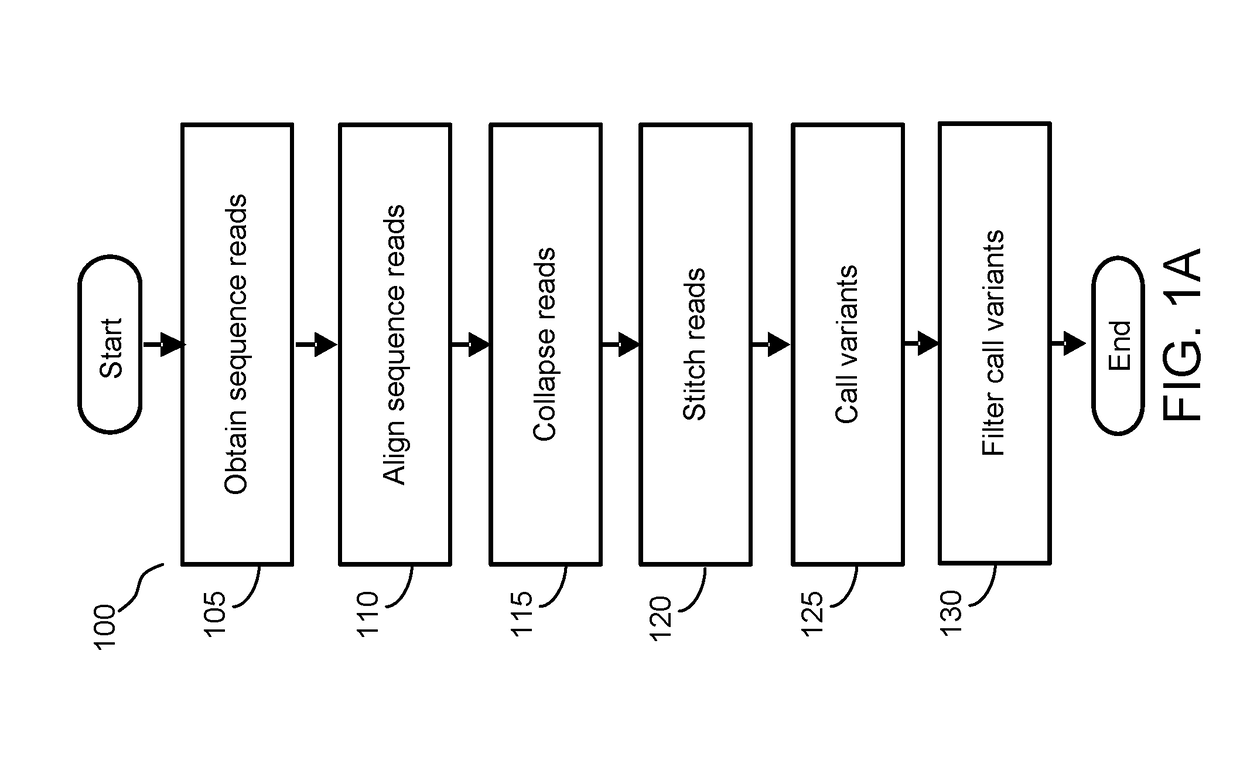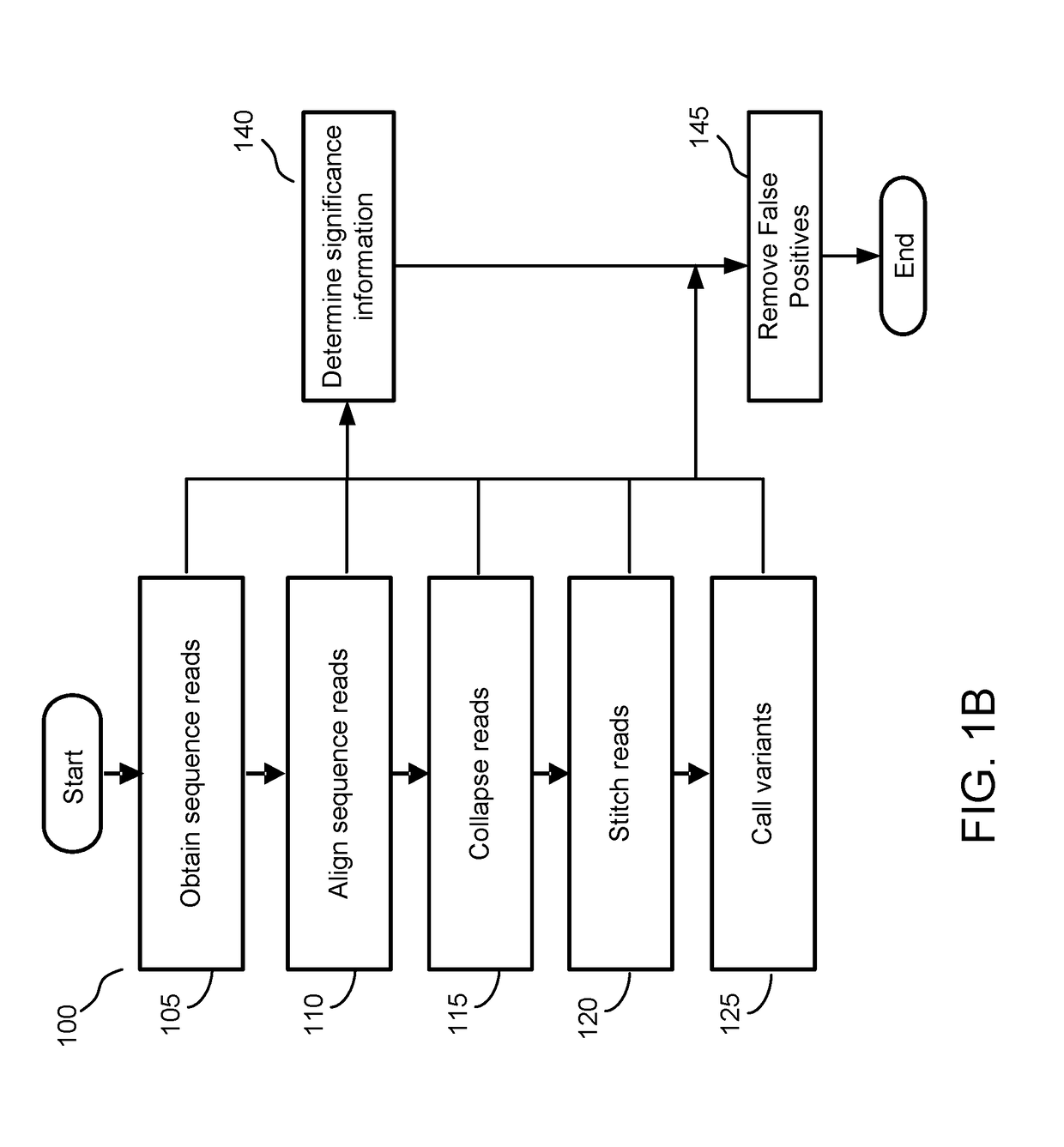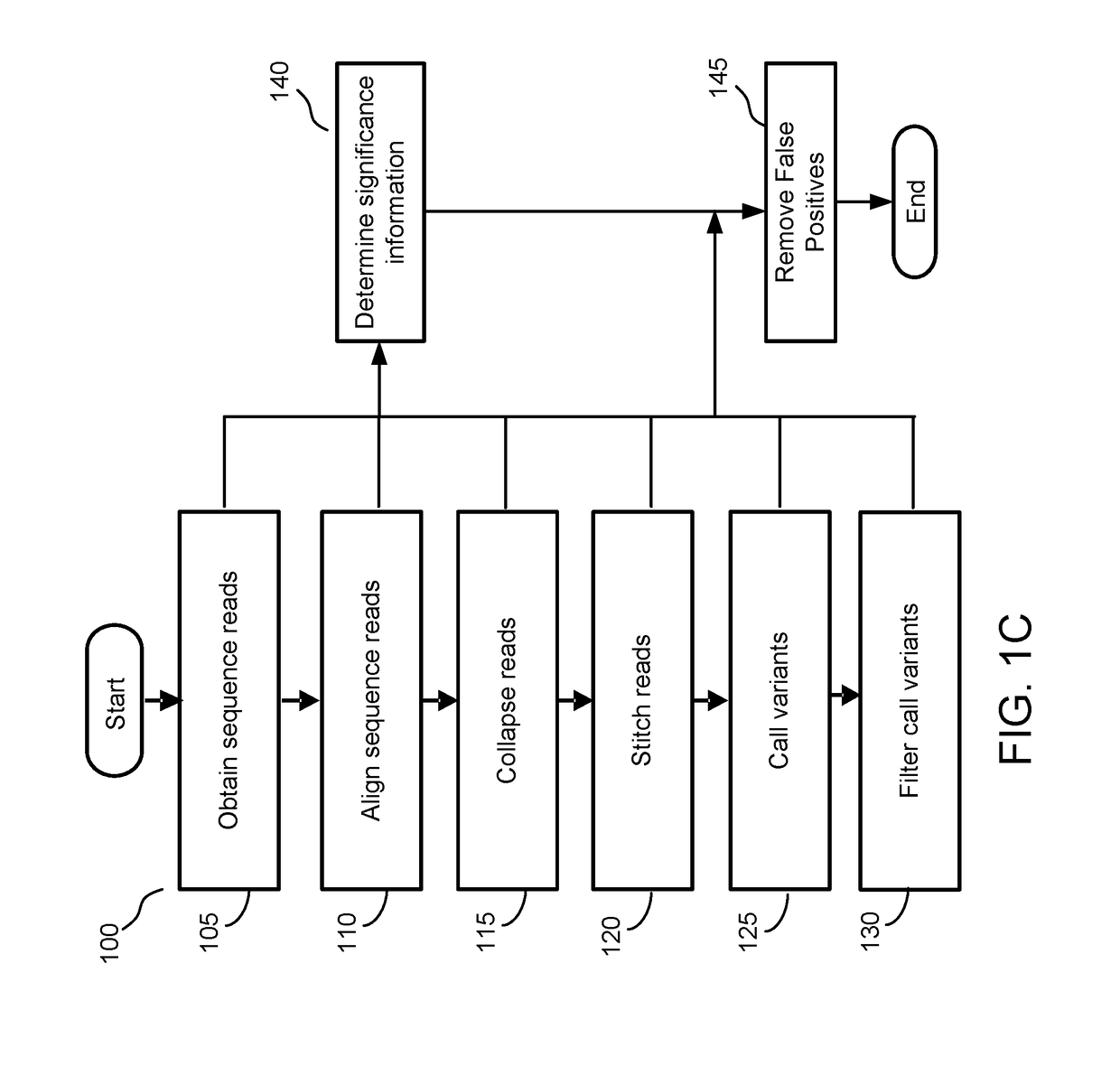Identifying false positive variants using a significance model
- Summary
- Abstract
- Description
- Claims
- Application Information
AI Technical Summary
Benefits of technology
Problems solved by technology
Method used
Image
Examples
example 1
Between Sensitivity and Specificity
[0135]FIG. 5A depicts the tradeoff between sensitivity (e.g., detection rate) and specificity (e.g., false positives per sample), in accordance with an embodiment. In this example, the tradeoff between sensitivity and specificity of applying the significance model is shown in relation to samples processed using the partial workflow process of FIG. 1A without the application of the significance model.
[0136]The expected allele frequency (expected AF) of different variants was experimentally determined using a cfDNA titration study. Referring to the most stringent criteria for removal of false positives in step 145 (e.g., p−6), for each expected AF (e.g., expected AF=0.1%, 0.2%, 0.4%), a large number of false positives were removed by step 145 (e.g., 130). However, for variants with lower expected AF (e.g., expected AF=0.1% or 0.2%), the detection rate similarly dropped at the most stringent criteria of p−6 in comparison to larger p-values. Importantl...
example experimental
Example 2: Example Experimental Setup
[0137]FIG. 5B depicts an example experimental setup for training and testing a significance model. In this example, a total of n=60 healthy human cfDNA samples were obtained from an experiment titled “RefSet experiment”. Of those, three samples were excluded due to likely contamination issues. The remaining cfDNA samples were divided into a training dataset (n=43) for training the significance model and a testing dataset (n=14) for testing the significance model. Additionally, n=24 genomic DNA samples (gDNA) were obtained for training the significance model and for evaluating the technical noise.
[0138]Each of the samples were processed using the process flow 100 depicted in FIG. 1B and the flow 1200 shown in FIG. 12. First, sequence reads for each sample were obtained (e.g., step 105). Two tubes of whole blood were drawn into Streck blood collection tubes from healthy individuals (self-reported as no cancer diagnosis). After plasma was separated ...
example 3
itive Called Variants Arise from Technical Bias
[0140]Having trained the significance model, the training datasets (e.g., cfDNA training dataset and gDNA training dataset) as well as the cfDNA testing dataset were used to evaluate the significance model. Each of these datasets were applied as input to the significance model to determine significance information that is used to differentiate true variants from false positive variants. The true variants and false positive variants were categorized according to their respective trinucleotide context. For example, FIG. 6A depicts an example graph of the frequency of detected false positives in the cfDNA training dataset as a function of trinucleotide sequences.
[0141]In FIG. 6A, true variants are blocks filled white whereas false positive variants are filled with other patterns or colors. Therefore, FIG. 6A depicts a high proportion of false positive variants for the trinucleotide sequences of ACG, CCG, CGA, CGC, CGG, CGT, GCG, and TCG. E...
PUM
| Property | Measurement | Unit |
|---|---|---|
| Distance | aaaaa | aaaaa |
| Frequency | aaaaa | aaaaa |
Abstract
Description
Claims
Application Information
 Login to View More
Login to View More - R&D
- Intellectual Property
- Life Sciences
- Materials
- Tech Scout
- Unparalleled Data Quality
- Higher Quality Content
- 60% Fewer Hallucinations
Browse by: Latest US Patents, China's latest patents, Technical Efficacy Thesaurus, Application Domain, Technology Topic, Popular Technical Reports.
© 2025 PatSnap. All rights reserved.Legal|Privacy policy|Modern Slavery Act Transparency Statement|Sitemap|About US| Contact US: help@patsnap.com



